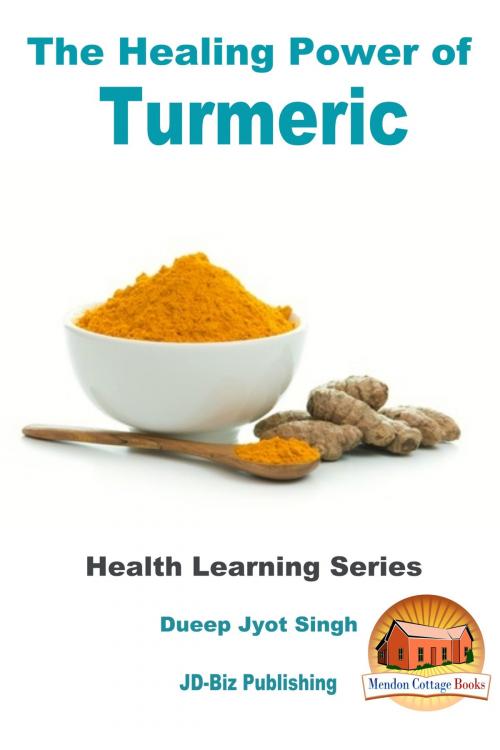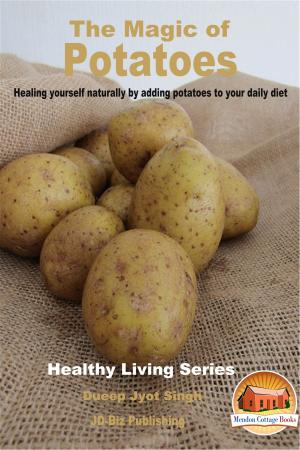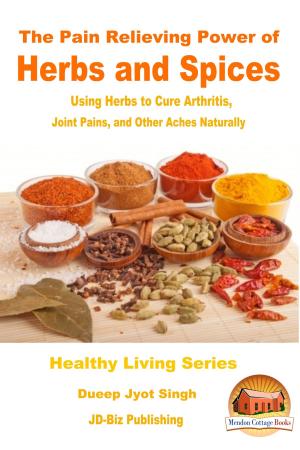The Healing Power of Turmeric
Nonfiction, Health & Well Being, Health, Nutrition & Diet, Food Content Guides, Healthy Living| Author: | Dueep Jyot Singh | ISBN: | 9781311560957 |
| Publisher: | Mendon Cottage Books | Publication: | May 29, 2016 |
| Imprint: | Smashwords Edition | Language: | English |
| Author: | Dueep Jyot Singh |
| ISBN: | 9781311560957 |
| Publisher: | Mendon Cottage Books |
| Publication: | May 29, 2016 |
| Imprint: | Smashwords Edition |
| Language: | English |
Table of Contents
Introduction
Turmeric for Healing
Cultivation of Turmeric
Harvesting Time
Turmeric Diseases
Storing Fresh Turmeric
Turmeric for Beauty
Conclusion
The Danger of Online Incomplete Knowledge regarding the Usage of Natural Medicine, including Turmeric
Author Bio
Publisher
Introduction
In my previous books, where I have written extensively about herbs, especially when they are used for healing, in cuisine and for beauty, I have normally spoken about herbs which are found globally. However, thanks to the state-of-the-art transport system of the 21st century, I can talk about herbs, which were once unavailable to the common people in other lands and native to only just one particular part of the globe. And that is the reason why the healing qualities of many local and native herbs, like ginseng, lemongrass, and other such herbs, which were possibly not available to people in other corners of the earth were overlooked for centuries.
But that is definitely not the situation today. You can walk into any city market and request spices from all corners of the world and you just have to ask and you will be given. And that is why today, we are going to be talking about one of the most powerful healing herbs available in the world today, to mankind, turmeric.
Turmeric belongs to the ginger family, and it is a rhizome. It originated in the southwest part of the Indian subcontinent millenniums ago, and nobody really knows which particular civilization found out that this rhizome dug up from the ground, could be used fresh, to impart a golden color to anything, food, clothes, and skin!
Being a native of a tropical region, turmeric needs lots of rain. The average temperature outside has to be around 20°C – 30°C, for this particular plant to survive.
When I was a child, I often saw one of our gardeners who also was a native herbalist going out into the woods and coming back triumphantly with these dug up rhizomes in her hand. They looked like ordinary ginger to me. So that is when I found out that these rhizomes were boiled for about 45 minutes and then allowed to dry in the sun in the shade for about 3 – 4 days. And after that the dried rhizomes would be ground in a pestle and mortar, to give a deep natural, yellow – orange powder, which was precious turmeric.
Table of Contents
Introduction
Turmeric for Healing
Cultivation of Turmeric
Harvesting Time
Turmeric Diseases
Storing Fresh Turmeric
Turmeric for Beauty
Conclusion
The Danger of Online Incomplete Knowledge regarding the Usage of Natural Medicine, including Turmeric
Author Bio
Publisher
Introduction
In my previous books, where I have written extensively about herbs, especially when they are used for healing, in cuisine and for beauty, I have normally spoken about herbs which are found globally. However, thanks to the state-of-the-art transport system of the 21st century, I can talk about herbs, which were once unavailable to the common people in other lands and native to only just one particular part of the globe. And that is the reason why the healing qualities of many local and native herbs, like ginseng, lemongrass, and other such herbs, which were possibly not available to people in other corners of the earth were overlooked for centuries.
But that is definitely not the situation today. You can walk into any city market and request spices from all corners of the world and you just have to ask and you will be given. And that is why today, we are going to be talking about one of the most powerful healing herbs available in the world today, to mankind, turmeric.
Turmeric belongs to the ginger family, and it is a rhizome. It originated in the southwest part of the Indian subcontinent millenniums ago, and nobody really knows which particular civilization found out that this rhizome dug up from the ground, could be used fresh, to impart a golden color to anything, food, clothes, and skin!
Being a native of a tropical region, turmeric needs lots of rain. The average temperature outside has to be around 20°C – 30°C, for this particular plant to survive.
When I was a child, I often saw one of our gardeners who also was a native herbalist going out into the woods and coming back triumphantly with these dug up rhizomes in her hand. They looked like ordinary ginger to me. So that is when I found out that these rhizomes were boiled for about 45 minutes and then allowed to dry in the sun in the shade for about 3 – 4 days. And after that the dried rhizomes would be ground in a pestle and mortar, to give a deep natural, yellow – orange powder, which was precious turmeric.















